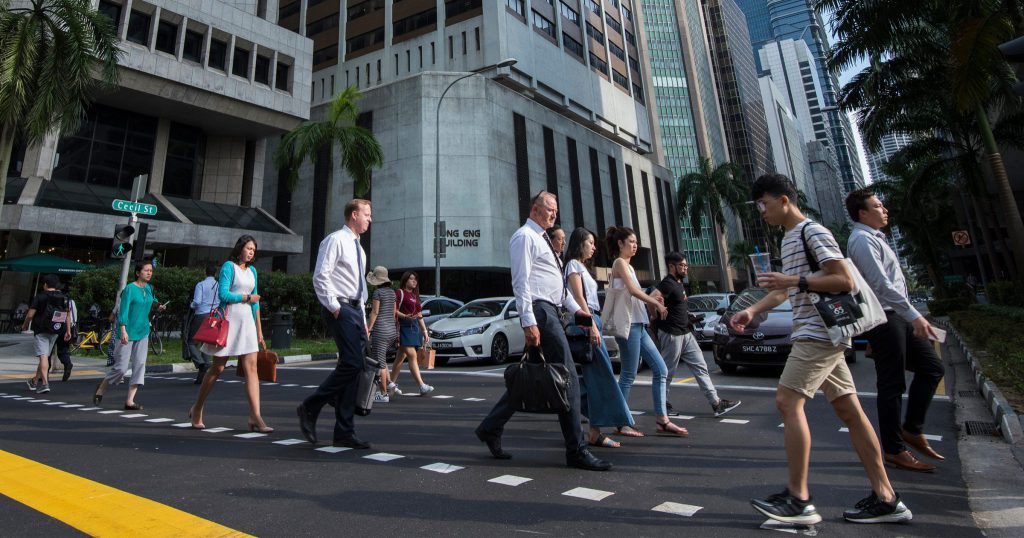The Singapore Department of Statistics released quarterly household net worth data on August 29, providing insights into wealth held in private hands, covering residents (citizens and PR) as well as foreigners who have engaged in economic activity in the city-state for at least a year.
| YEAR-ON-YEAR CHANGE | Q2 2023 |
| Household Net Worth (= Assets – Liabilities) | +8.9% |
| Assets | +7.6% |
| – Financial Assets | +6.6% |
| – Residential Property Assets | +9.1% |
| Liabilities | -1.0% |
| – Mortgage Loans | +1.8% |
| – Personal Loans | -7.9% |
Paying off dues
While these figures may be affected by inward migration, i.e. wealthy people moving to Singapore, it is notable that the increase in assets held in private hands coincided with a drop in liabilities — particularly in personal loans, which are typically most costly and taken to finance current spending.
Given the rising interest rates, it makes sense to reduce your outstanding liabilities, but it also shows that Singaporeans were able to do so, paying off S$10 billion in non-motor vehicle loans (even as credit card debt increased by S$2 billion at the same time).
| LIABILITIES | Q2 2022 | Q2 2023 |
| Mortgage Loans | 259,487 | 264,037 |
| – Financial Institutions | 221,838 | 224,571 |
| – Housing & Development Board (HDB) | 37,648 | 39,466 |
| Personal Loans | 103,042 | 94,935 |
| – Motor Vehicle | 10,213 | 9,660 |
| – Credit/Charge Cards | 11,611 | 13,289 |
| – Others | 81,218 | 71,985 |
Meanwhile, assets held by the public have crossed the S$3 trillion mark for the first time in history, increasing by 50 per cent in just six years (having reached S$2 trillion in Q2 of 2017).
| TOTAL | Q2 2022 | Q2 2023 |
| Household Net Worth | 2,467,625 | 2,687,424 |
| Assets | 2,830,155 | 3,046,397 |
| Liabilities | 362,529 | 358,973 |
Money is pouring in
Of course, about a half of this 7.6 per cent jump is due to rising property prices — both public and private — which may not be felt by most people in the short-term (unless they are investing in real estate), and whose flip side is the financial burden it increases on new homeowners.
However, financial assets have contributed to the other half, or over S$105 billion in a year, with three-quarter of the increase coming from non-pension related investments (i.e. excluding CPF balances, as well other pension funds).
| ASSETS | Q2 2022 | Q2 2023 |
| Financial Assets | 1,605,478 | 1,710,683 |
| – Currency & Deposits | 566,634 | 606,248 |
| – Shares & Securities | 244,123 | 270,114 |
| – Life Insurance | 247,589 | 260,915 |
| – Central Provident Fund (CPF) | 530,340 | 556,495 |
| – Pension Funds | 16,791 | 16,910 |
| Residential Property Assets | 1,224,677 | 1,335,714 |
| – Public Housing | 544,123 | 586,981 |
| – Private Housing | 680,553 | 748,733 |
Naturally, there’s a limit to how much statistics can show about lives of particular residents. Some are better off than others.
There’s no question that Singapore continues to attract wealthy new residents who bring billions of dollars with them and household net worth data reflects their investments.
However, it also means more profitable work for the local financial sector, more property sales for local developers, and more consumption in local goods and services providers.
Meanwhile, falling liabilities — which can’t be affected by inward migration — suggest that financial situation of existing residents/citizens is improving as well, as they no longer need to borrow as much for consumption and are able to settle their debts — if not invest more themselves as well.
Featured image credit: truebearingimages / depositphotos










